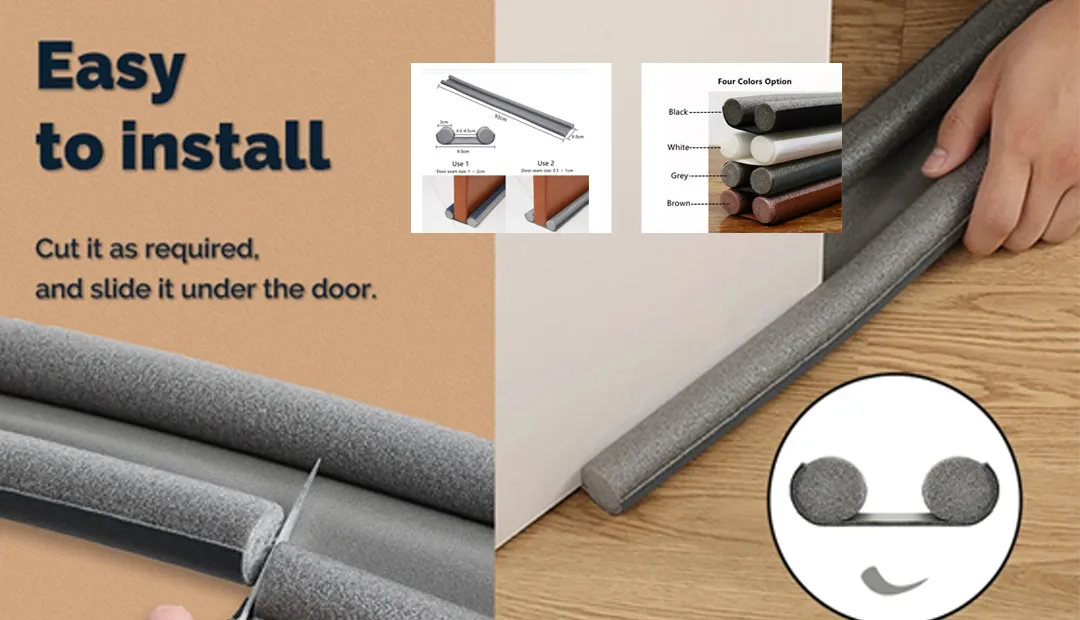Different Categories of Bottom Garage Door Seals for Enhanced Protection and Energy Efficiency
Types of Bottom Garage Door Seals
A garage door seal is an essential component of any garage, serving as the first line of defense against the elements. It seals the gap between the bottom of the garage door and the ground, preventing water, dirt, and pests from entering. With various types of bottom garage door seals available on the market, it’s crucial to understand their differences and applications. This article explores the common types of bottom garage door seals, their materials, and the benefits of each type.
1. Rubber Seals
Rubber seals are one of the most popular options for garage doors. Made from durable rubber compounds, these seals offer excellent weather resistance and longevity. They are designed to fit snugly against the floor, effectively keeping out water, dust, and pests. Rubber seals typically come in two forms bulb shapes and flat strips. Bulb-shaped seals have a rounded design, which allows them to compress against the floor, ensuring a tight seal. Flat rubber strips, on the other hand, provide a more straightforward installation and can be more cost-effective.
2. Vinyl Seals
Vinyl seals are another widely used option for garage doors. Known for their flexibility and resistance to cracking, vinyl seals provide a reliable barrier against the elements. They are lightweight and easy to install, making them a preferred choice for many homeowners. Vinyl seals can also maintain their shape and resilience over time, resisting the adverse effects of UV radiation and extreme temperatures.
3. Aluminum and Metal Seals
For those seeking durability and strength, aluminum or metal seals are an excellent choice. These seals are often used in commercial garage doors or for those requiring higher security and robustness. Aluminum seals are resistant to corrosion, making them suitable for environments where moisture is a concern. They often come with a rubber insert that enhances sealing capabilities while providing a sturdy structure to withstand heavy use.
types of bottom garage door seals

4. Contact-Type Seals
Contact-type seals are designed for a more specialized application, often used in garage doors with a track system. These seals typically feature a flexible lip that adjusts to the surface beneath the door, maintaining a tight seal as the door moves up and down. This type of seal is effective for both residential and commercial applications and is well-suited for uneven surfaces that might otherwise compromise the seal.
5. Magnetic Seals
Magnetic seals are less common but increasingly popular due to their ease of use and effectiveness. These seals have magnets embedded in them that help them adhere to the bottom of the garage door and the floor. They ensure an airtight seal when the door is closed, which can be particularly beneficial in areas with extreme weather conditions. Magnetic seals are also easy to replace, making them an attractive option for those who want a hassle-free solution.
Choosing the Right Seal
When selecting the right bottom garage door seal, homeowners should consider factors such as the local climate, the door material, and the garage floor condition. For instance, if the garage is susceptible to flooding, a thicker rubber seal may be more appropriate. Conversely, if the garage is maintained at a stable temperature, a simpler vinyl seal might suffice.
In conclusion, choosing the right bottom garage door seal is vital for maintaining the integrity and efficiency of a garage. With various options available, including rubber, vinyl, aluminum, contact-type, and magnetic seals, homeowners must assess their needs to select the best seal for their garage door. Proper installation and maintenance of these seals can lead to a more energy-efficient, pest-free environment while prolonging the lifespan of the garage door.
-
Silicone Seal Strip: The Ultimate Solution for Your Sealing NeedNewsNov.01,2024
-
Keep the Heat: The Importance of Seal for Oven DoorsNewsNov.01,2024
-
Essential Guide to Corner Protectors for Your FurnitureNewsNov.01,2024
-
Enhance Your Home with Silicone SolutionsNewsNov.01,2024
-
Efficient Maintenance of Melamine Sealing StripsNewsNov.01,2024
-
Comparison of Different Edge Sealing ProcessesNewsNov.01,2024
-
Types of Door Bottom Seal Strips and Their Best UsesNewsOct.25,2024